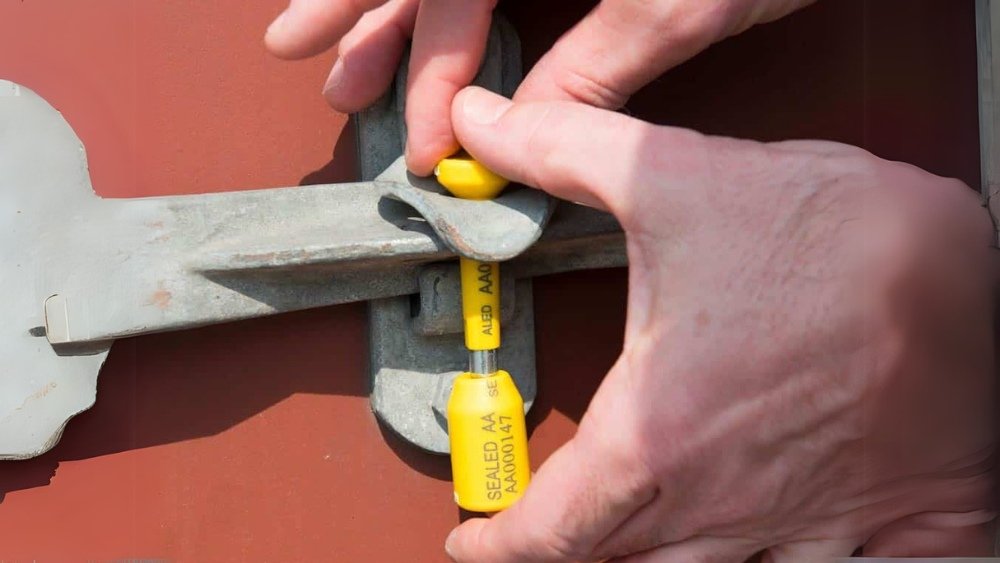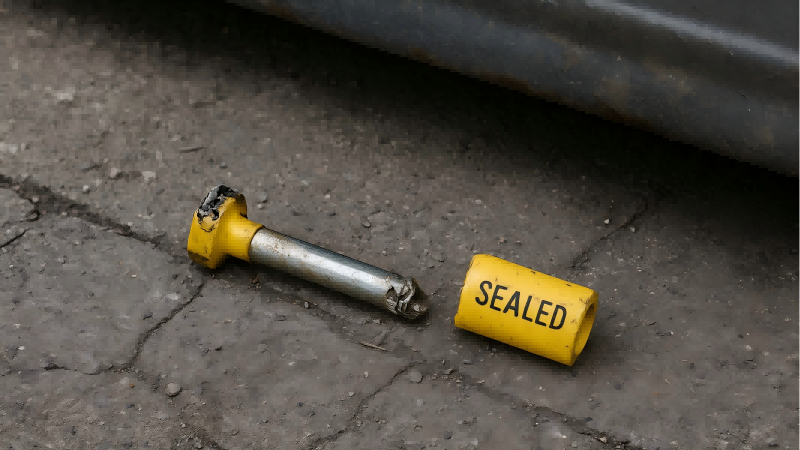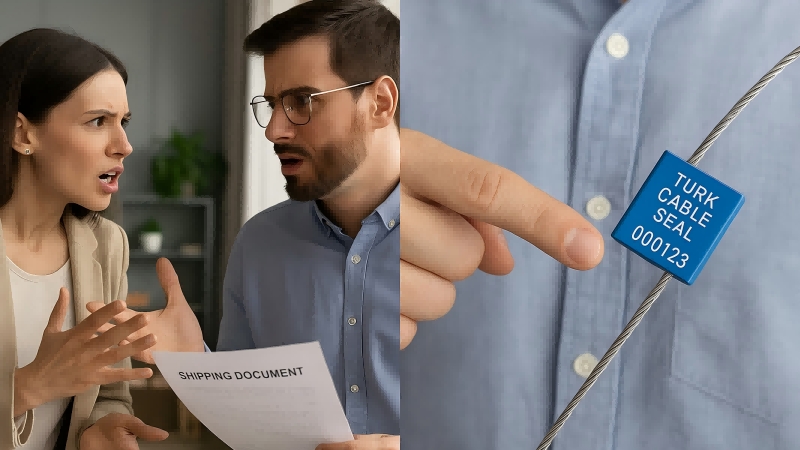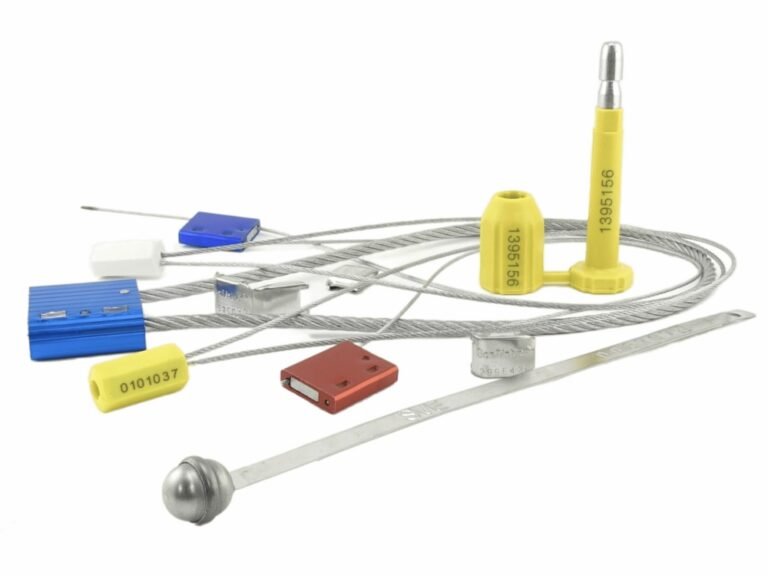Goods have vanished from your sealed container, yet the lock seems untouched. With every partner denying fault and no proof of tampering, you are left to absorb the entire, costly loss.
Cargo sealing is the process of applying a uniquely numbered, tamper-evident seal to create an unchangeable "identity snapshot" of a shipment's integrity. This mobile certificate of integrity solves critical problems by making theft obvious, clarifying liability, and proving compliance.

In my work, I've found that the term "cargo sealing" is often misunderstood. People think it's just a fancy way of saying "locking up." This isn't true. The essence of cargo sealing is not to "lock," but to use a uniquely numbered seal to take an unchangeable "identity snapshot" of the cargo's condition. This snapshot becomes a mobile "certificate of integrity" that travels with the shipment. It makes theft obvious, makes assigning responsibility clear, and even makes customs inspections more efficient. Ultimately, it’s what protects your promise to your customer and your brand's reputation. Let's break down the specific problems this simple process solves.
The Cargo Sealing Protocol: Core Components for Supply Chain Security
You've started using seals, but there's no system. Drivers grab any seal, numbers aren't recorded, and the receiver has no idea what to look for, making the entire effort useless.
A cargo sealing protocol is a formal, documented procedure that turns a simple seal into a tool for supply chain security. It defines who applies the seal, how its number is recorded and shared, and the mandatory inspection process upon receipt.

A seal is only as strong as the process built around it. To create a true "certificate of integrity," you need a robust protocol. I've helped clients implement these protocols, and they always contain three core components that work together to create a secure evidence chain.
1. Controlled Application
This is the start of the "snapshot." The protocol must define who is authorized to apply a seal—typically a warehouse manager or a designated shipping lead. The seal is applied immediately after loading is complete and the doors are shut. This creates a specific moment in time when the cargo is certified as secure and complete.
2. Documented Communication
A seal number that isn't recorded is just a piece of plastic. The number must be recorded on the Bill of Lading or shipping manifest. More importantly, this number must be communicated in advance to the final receiver. This proactive communication tells the receiver exactly what to expect, turning them into an active part of your security team.
3. Mandatory Verification
This is the final check of the "snapshot." The protocol must require the receiver to perform two checks before breaking the seal: 1) Verify the seal is physically intact. 2) Confirm the serial number on the seal exactly matches the number on the manifest. Any discrepancy means the "certificate of integrity" is void, and the shipment should be rejected or inspected with the carrier present.
Problem 1 Solved: Preventing Unauthorized Access and Theft
You worry about your high-value goods disappearing during long transit times. The biggest threat isn't a dramatic heist, but a quick, undetectable theft by someone with easy access.
Cargo sealing directly combats opportunistic theft by removing the possibility of secret access. Since a numbered seal cannot be opened without being destroyed, any theft attempt leaves immediate, undeniable evidence, shifting theft from a mystery to a documented event.

This is the most direct problem that cargo sealing solves. Most cargo theft is simple and opportunistic. It's a driver opening a back door for 30 seconds to pull out a single box. Without a seal, this is nearly impossible to prove. With a seal, this type of theft becomes too risky.
- Deterrence through Evidence: The seal's primary power is as a deterrent. A potential thief knows they can't just open the door. They must break the seal, an act that leaves a permanent record. In most cases, they will simply move on to an unsealed, easier target. The risk of being caught is too high.
- Transforming "Shrinkage" into Theft: Many companies write off a certain amount of loss as "shrinkage." A sealing protocol helps you identify exactly where and when this shrinkage happens. When Seal #12345 leaves your facility but Seal #67890 arrives, you don't have shrinkage; you have a documented theft event that occurred while under the carrier's control. You now have the evidence to file a claim and hold the right party accountable.
Problem 2 Solved: Creating Irrefutable Accountability in Disputes
Your customer claims they were short-shipped, but you know you loaded the full order. The carrier denies anything happened on their watch. You are now stuck in a "he said, she said" dispute with zero proof.
A proper sealing protocol creates irrefutable accountability at every handover point. The unbroken seal is your proof that the shipment was not tampered with, and a broken seal proves exactly when liability transferred to the responsible party.

In my experience, this is the benefit that saves clients the most money and frustration over the long term. The "snapshot of integrity" provided by the seal acts as a legal witness in any dispute. Let's look at a common scenario:
| Event | No Seal Protocol | With a Seal Protocol |
|---|---|---|
| The Dispute | A customer is missing $10,000 of product. They blame you for a short shipment. The carrier denies everything. | Customer reports a shortage but also reports Seal #ABC12345 was intact upon arrival, as per the manifest. |
| Investigation | A time-consuming, frustrating investigation begins. You check warehouse cameras. The carrier checks their logs. No one can prove anything. | You check your loading photos and records. Because the seal arrived intact, you know the container was not opened during transit. |
| The Outcome | You have no proof. To save the customer relationship, you may have to cover the loss yourself. Your trust in the carrier is broken. | The evidence proves the container was secure. The error must have been an internal packing mistake. The scope is narrowed, the dispute is resolved quickly, and no fraudulent claim is paid. |
The seal transforms a chaotic blame game into a clear, evidence-based process.
Problem 3 Solved: Ensuring Regulatory and Customs Compliance
Your container is flagged for a random customs inspection, causing a multi-day delay and inspection fees. You are constantly worried about meeting complex international shipping security standards.
A high-security seal is a key component of global customs compliance programs like C-TPAT. Using compliant seals demonstrates a secure supply chain, often leading to faster customs clearance and fewer inspections.

Customs agencies around the world are not just concerned with collecting tariffs; they are a nation's first line of defense. They need to trust that what is on the manifest is what is in the container—and nothing else. High-security seals provide that trust.
- Meeting International Standards: Programs like the Customs Trade Partnership Against Terrorism (C-TPAT) in the U.S. require participants to use seals that meet the ISO 17712 standard for high security. Using these seals is not optional; it is a requirement for membership and its benefits.
- Faster Clearance, Fewer Inspections: When customs officers see a compliant, high-security seal that is properly documented, it gives them confidence in the shipment's integrity. While not a guarantee, members of programs like C-TPAT experience significantly fewer random inspections. This saves enormous amounts of time and money in drayage and inspection fees.
- Preventing Contraband Fines: An unbroken seal also serves as your defense if illegal contraband is discovered in a container. It helps prove that the items were added after the container left your control, potentially saving you from crippling fines and legal charges.
Problem 4 Solved: Safeguarding Product Integrity and Brand Reputation
Your shipment of food products arrives with a broken trailer seal. The receiver has no choice but to reject the entire load due to contamination risks, damaging your brand's reputation for quality and reliability.
A cargo seal does more than protect against theft; it safeguards product integrity. For sensitive goods like food, pharmaceuticals, and chemicals, an intact seal is proof that the cargo's controlled environment has not been compromised, protecting both your customers and your brand reputation.

Your brand's reputation is one of your most valuable assets. Every shipment is a promise to your customer. A seal helps you keep that promise. I've worked with clients in sensitive industries where the seal's role is not about theft, but about safety and quality.
- Food and Pharmaceuticals: The Food Safety Modernization Act (FSMA) and similar regulations require proof that food has been transported in a sanitary, secure manner. An intact seal is a key piece of that proof. It shows that the doors haven't opened, preventing potential contamination from pests, temperature changes, or deliberate tampering.
- High-Value Electronics: For electronics, an unbroken seal assures the receiver that sensitive components haven't been exposed to moisture or swapped with counterfeit parts. This is a critical part of quality control.
- Building Customer Trust: When a customer receives a shipment and the seal number matches the one you sent them, it builds incredible confidence. It tells them you are a professional, detail-oriented supplier who takes the security of their products seriously. That confidence is the foundation of a long-term business relationship.
Conclusion
Cargo sealing is a strategic process that solves major business problems. It creates a "snapshot of integrity" that deters theft, defines accountability, ensures compliance, and ultimately protects your profitability and brand reputation.
Turn Your Shipments into Certificates of Integrity with ProtegoSeal
Don't let your supply chain be a chain of questions. Build a chain of evidence. At ProtegoSeal, we provide the high-quality security seals and expert guidance to implement a protocol that works. Contact us to begin solving your logistics problems today.

